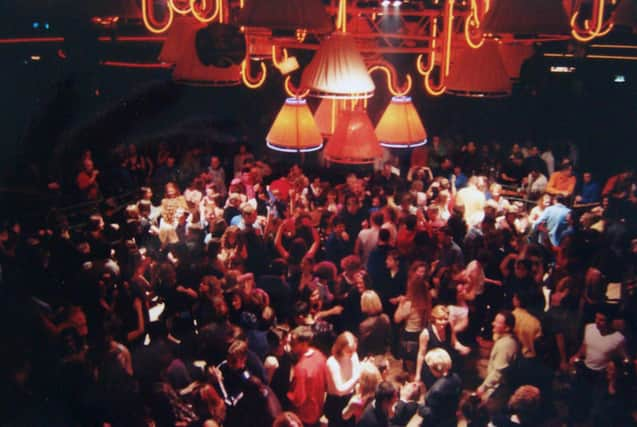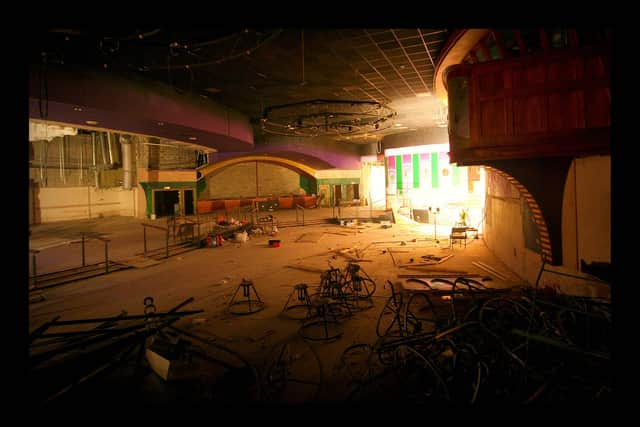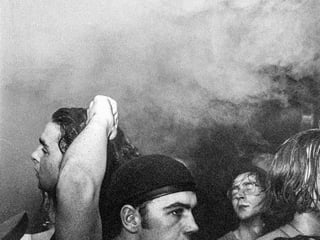Nightclubbing: The death of the Scottish superclub


Amadeus opened down on the beachfront in Aberdeen in August 1997, with entertainment corporation First Leisure behind the enterprise.
They ran Blackpool Tower and Winter Gardens as well as a number of piers in the small city-on-sea. In Aberdeen, they opened a seafront superclub and the city lapped it up.
Advertisement
Hide AdAdvertisement
Hide AdMore than 2,100 people fitted in to Amadeus, with punters finding corners in five separate bars or a space on the dance floor that was dotted with podiums and a stage that moved up and down.


Laura Hughes, 40, was hired as a bar staff member as the venue opened.
She said: “It was an amazing place, the first of its kind to open in Aberdeen. I just remember how busy it was – it felt like everyone was coming to it.
"For months and months and months it was packed out.
“It was great working there, the people were great. It was just a lot of fun.”
Commercially, Amadeus tried to offer something for everyone. On Monday it was student night with £1 pints, crates of Diamond White – often served ‘black’ – and free buses running to and from the halls of residence to secure a clientele.
"Thursday was ‘70s night,” Ms Hughes recalls. “We had dancers come up from Glasgow every week – they would get on the podiums – and we had this stage that moved up and down. It was quite a thing.”
Friday night was classic club and disco, Saturday was reserved for the over-25s and then more discerning house music came on a Sunday, with a DJ flown up from London.
The five different drinking areas came in different themes and included the casino bar, the Gothic bar, the secret garden and the VIP bar, which looked directly down on the dance floor.
Advertisement
Hide AdAdvertisement
Hide Ad"I just remember how busy it was – it never got quiet, I was just serving drinks all night long,” Ms Hughes said.
But the seaside fun house entered troubled water when First Leisure went into a management buyout in 2000 with the company starting to shed its nightclubs’ portfolio.
The free buses that scooped up drinkers from the city centre stopped running and the 30-minute walk to the beach or the extra taxi fare there and back meant that its pull started to fade.
"Trying to get a taxi home from there at 3am was no fun,” Ms Hughes recalled.
In January 2003, the club shut down, with the company insisting it as a temporary measure. There were 20 years left on a 25-year lease. It never opened again.
But it appeared the company remained keen on Aberdeen and saw potential in the city’s night-time trade.
"We can state that Aberdeen is an exciting and vibrant city with a population profile that closely manages our requirements for new developments,” a statement said at the time.
It was long speculated that Amadeus would find a city centre location, but plans never materialised. A relaxation of the gaming laws later saw a raft of applications for casino licences in the city, with one for boarded-up Amadeus amongst them.
Advertisement
Hide AdAdvertisement
Hide AdA number of proposals for the site were made over the next ten years, including an alcohol-free religious youth venue.
Ms Hughes, a keen photographer with an interest in abandoned places, managed to enter Amadeus in 2012 ‘by chance’ as workmen started to gut the building.
“I have always got my camera in my car,” she said.
"I was down at the retail park and saw the door was open. I just chanced my luck and went in.
"It was so strange seeing it, empty. I started taking photographs and all these feelings, these memories came flooding back.”
At that time, it was due to become a karaoke car, but Amadeus’s days as an entertainment powerhouse had long passed. In 2014 it became a branch of The Range. At the former nightclub spot, staying home became the new going out.
Two years after Amadeus’s doors first opened, First Leisure embarked on an even more ambitious enterprise that, in terms of size, would rival the legendary night spots of the Balearics.
In November 1999, the 3,000-capacity Eros Elite nightclub opened as part of a new development in Fountainbridge, a short distance from Edinburgh city centre.
The new clubbing venue enjoyed a baptism of fire during its first few weeks and was filled to the rafters with revellers for its Millennium party.
Advertisement
Hide AdAdvertisement
Hide AdWith a huge dance floor, VIP areas and half a dozen Greek god themed bars, Eros set a new standard for night clubs in the Scottish capital – but it wasn’t without its problems.
According to one former Edinburgh cabbie, the Fountainbridge venue developed a reputation in the city as a place that attracted violence, particularly as nights drew to a close.
Robert McCulloch recalls waiting in the rank outside Eros at closing time and the inevitable fights that would all too often ensue.
He said: “Working night shift as a taxi driver back in those days, we always made for Eros at closing time and you had to see it to believe it.
“The taxi marshalls would be kept busy with the queues and trying to work out who was too drunk to travel. Anyone who did cause bother – which happened often – was barred from coming back.
"I remember taking people home and they would be bragging about how many folk they had beaten up that night.
"Eros was forever associated with violence and I personally think this was one of the reasons the place ultimately closed.”
Comments
Want to join the conversation? Please or to comment on this article.
